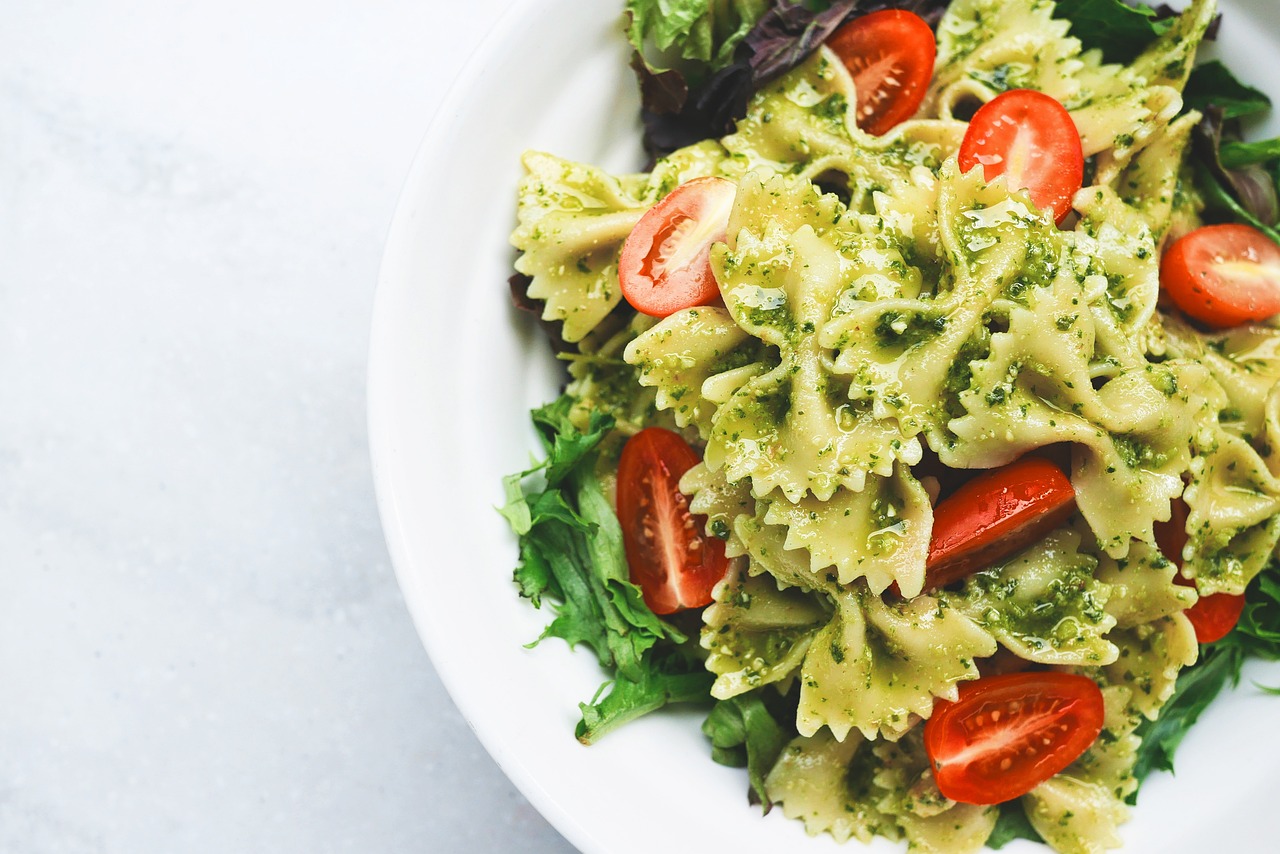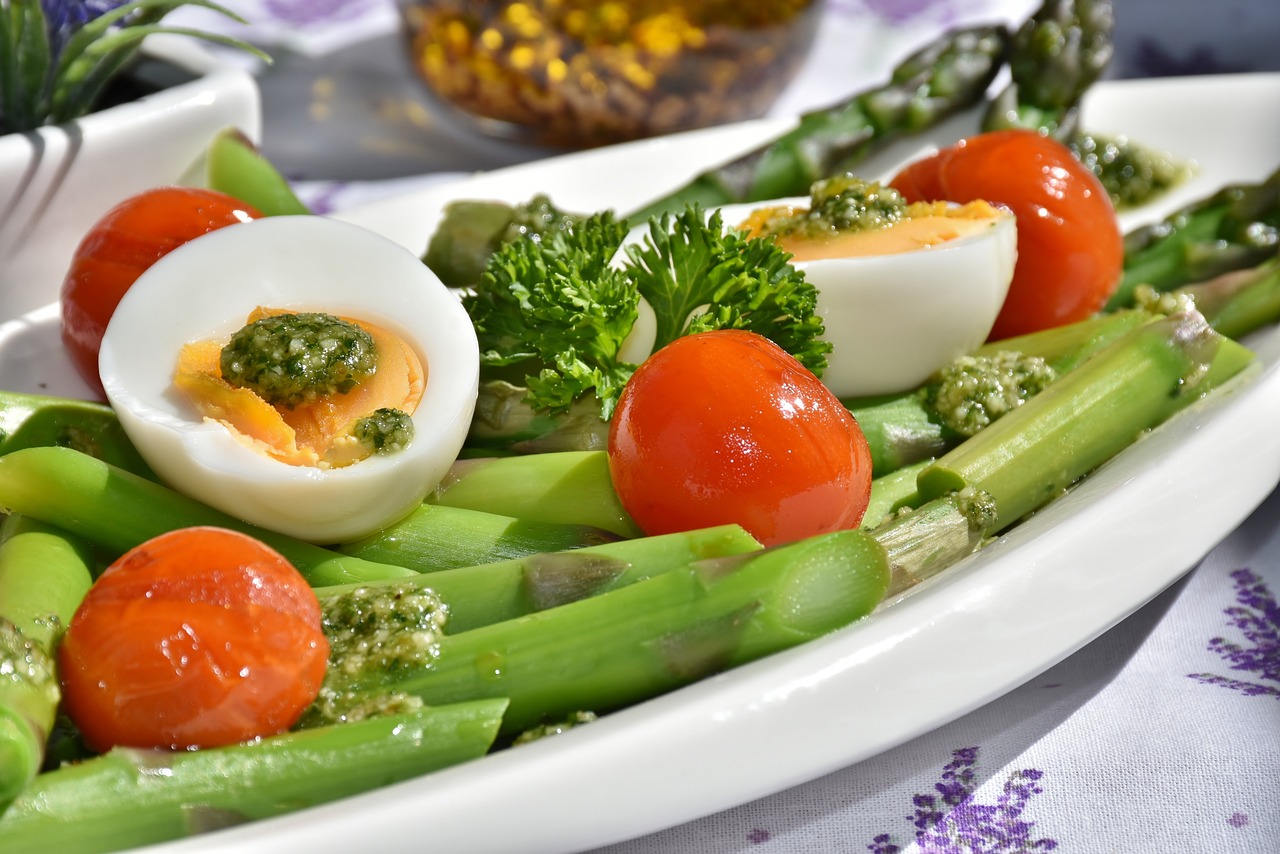Escape to the enchanting world of Moroccan cuisine and indulge in the culinary delights of tagines, couscous, and mint tea. Step into a vibrant tapestry of flavors as you explore the rich heritage and traditions of Moroccan cuisine. From the aromatic spices to the tender slow-cooked meats, each dish tells a captivating story that will transport your taste buds to the bustling streets of Marrakech. Immerse yourself in the magic of Morocco and embark on a culinary journey that will leave you craving for more.

Moroccan Cuisine
Introduction to Moroccan culinary tradition
Moroccan cuisine is a vibrant and diverse culinary tradition that encompasses a rich blend of flavors and influences from Berber, Arab, and Mediterranean cultures. The country’s unique geography and history have shaped its gastronomy into a tapestry of exquisite dishes and aromatic spices. From the iconic tagines to the fragrant couscous and refreshing mint tea, Moroccan cuisine offers an extraordinary experience for food enthusiasts.
Influence of Berber, Arab, and Mediterranean cultures
Moroccan cuisine is a delightful fusion of three distinct influences: Berber, Arab, and Mediterranean. The Berber people, indigenous to North Africa, have contributed their deep understanding of local ingredients and cooking techniques. Arab settlers brought flavors such as cinnamon, coriander, and cumin, as well as intricate ways of preparing meat and vegetables. Additionally, the Mediterranean influence has introduced ingredients like olives, citrus fruits, and seafood to Moroccan dishes. This amalgamation of cultural influences has shaped Moroccan cuisine into the unique and enticing gastronomy it is today.
Key ingredients in Moroccan cuisine
Moroccan cuisine is known for its vibrant and aromatic flavors, largely due to the key ingredients that are widely used. Some of the essential ingredients in Moroccan cooking include:
- Spices: Moroccan cuisine is renowned for its extensive use of spices. Cumin, turmeric, coriander, ginger, cinnamon, and paprika are just a few examples. These spices add depth and complexity to dishes, creating a symphony of flavors.
- Herbs: Herbs, such as parsley, cilantro, and mint, are commonly used in Moroccan cooking to provide freshness and a burst of flavor.
- Couscous: As a staple in Moroccan cuisine, couscous is made from semolina, a type of wheat. It serves as a versatile and delicious base for various dishes.
- Olives and olive oil: Morocco is known for its high-quality olives and olive oil production. These ingredients add a distinct richness and fruity aroma to many Moroccan dishes.
- Preserved lemons: Preserved lemons are a key ingredient in Moroccan cuisine, adding a tangy and intense flavor to a variety of dishes.
- Meat and poultry: Lamb, beef, chicken, and sometimes fish are commonly used in Moroccan dishes. These proteins are often slow-cooked or braised, resulting in tender, flavorful meat.
- Honey and almonds: Honey and almonds are a popular combination in Moroccan desserts, providing a sweet and nutty contrast.
Traditional Moroccan Dishes
Tagines: A Moroccan Icon
Tagines are a cornerstone of Moroccan cuisine and a true icon of the country’s culinary traditions. A tagine refers to both the name of a dish and the conical-shaped cooking vessel in which it is prepared. This traditional slow-cooking method creates tender meat, flavorful vegetables, and rich sauces. Tagine recipes can vary widely, with combinations of ingredients such as lamb, chicken, preserved lemons, olives, and a blend of aromatic spices.
Couscous: A Staple of Moroccan Cuisine
Couscous is another essential element of Moroccan cuisine, often considered the national dish. This small grain-like pasta is traditionally steamed and served alongside a flavorful meat or vegetable stew. The distinctive texture and delicate flavor of couscous make it a versatile ingredient for both savory and sweet dishes.
Pastilla: A Delicate and Flavorful Dish
Pastilla, also known as b’stilla, is a unique Moroccan dish that is both delicate and flavorful. This traditional savory pie typically features layers of flaky phyllo pastry filled with a combination of meat (usually pigeon or chicken), almonds, spices, and a hint of sweetness from ingredients such as cinnamon and honey. The combination of contrasting textures and flavors creates a truly extraordinary culinary experience.
Harira: A Hearty Moroccan Soup
Harira is a hearty and nutritious soup that is commonly enjoyed during the holy month of Ramadan. This traditional Moroccan dish is made with a base of lentils, chickpeas, tomatoes, and aromatic spices such as ginger, turmeric, and cinnamon. Harira is not only delicious but also provides sustenance and energy after a day of fasting.
B’stilla: A Sweet and Savory Delight
B’stilla, also known as pastilla, is a unique Moroccan dish that combines sweet and savory flavors in a delicate and decadent pastry. Typically made with layers of thin phyllo dough, b’stilla features a filling of spiced meat (such as pigeon or chicken), almonds, and a hint of sweetness from ingredients like cinnamon and honey. This flavorful combination is then baked until golden and served with a dusting of powdered sugar and cinnamon.

The Magic of Tagines
Definition and history of the tagine
A tagine refers to both a traditional Moroccan dish and the conical-shaped clay pot in which it is cooked. The word “tagine” comes from the Arabic term “tajine,” which means “earthenware pot.” This cooking vessel is designed to ensure all the flavors and aromas are trapped inside, resulting in tender and succulent dishes.
Historically, the tagine pot has been used for centuries in North Africa. The design and shape of the pot allow for slow and even heat distribution, making it perfect for simmering stews and braising meats. This method of cooking not only infuses the ingredients with incredible flavor but also tenderizes tougher cuts of meat.
Different types of tagines and their uses
Tagines come in various designs and sizes, each with its unique purpose. Some tagines have a glazed interior, making them more suitable for cooking and serving. Others have an unglazed interior, which is perfect for slow-cooking and infusing flavors.
Traditional tagines can be made from clay, ceramic, or even cast iron. The cone-shaped lid helps condense the steam and direct it back into the dish, ensuring that the food remains moist and flavorful.
Traditional tagine recipes
There are countless traditional tagine recipes, each showcasing the rich flavors and ingredients of Moroccan cuisine. Here are a few examples:
- Lamb Tagine with Apricots and Almonds: This sweet and savory tagine combines tender lamb with dried apricots, almonds, and aromatic spices. The sweetness of the apricots and the crunch of the almonds complement the succulent lamb perfectly.
- Chicken Tagine with Olives and Preserved Lemons: This classic Moroccan dish features tender chicken cooked with briny olives and tangy preserved lemons. The flavors meld together beautifully, creating a vibrant and aromatic tagine.
- Vegetable Tagine with Couscous: For a vegetarian option, a vegetable tagine is a wonderful choice. Colorful vegetables such as carrots, zucchini, bell peppers, and tomatoes are simmered in a fragrant blend of spices. This tagine is often served over fluffy couscous, creating a satisfying and flavorful meal.
The art of slow cooking in a tagine
The tagine’s unique shape and materials allow for slow and gentle cooking that brings out the best flavors in Moroccan dishes. The slow-cooking process ensures that the meat becomes tender and infused with the aromatic spices. The lid of the tagine traps and circulates steam, keeping the dish moist and preventing it from drying out.
To maximize the flavors in a tagine, it is essential to cook it over low heat for an extended period, allowing all the ingredients to meld together. This slow-cooking method creates a truly magical and flavorful experience that is synonymous with Moroccan cuisine.
The Art of Couscous
Origin and significance of couscous in Moroccan cuisine
Couscous holds a special place in Moroccan cuisine and is considered a beloved staple of the country’s culinary heritage. Originating from the Berber region, couscous has been a part of Moroccan culture for centuries, representing hospitality, togetherness, and celebration.
Different types of couscous
In Moroccan cuisine, there are several varieties of couscous to choose from, depending on personal preference and the dish being prepared. The most common types include:
- Fine couscous: Fine couscous has a delicate texture and is often used as a base for stews and tagines. It cooks quickly and absorbs flavors beautifully.
- Medium couscous: Medium couscous has a slightly larger grain size and a slightly chewier texture. It is often used in salads and side dishes.
- Pearl couscous: Also known as Israeli couscous, pearl couscous is larger in size and has a pasta-like texture. It is often used in heartier dishes or in salads.
Traditional couscous dishes
Couscous is incredibly versatile and can be used as a base for a wide variety of dishes. Here are a few traditional Moroccan couscous recipes:
- Couscous with Seven Vegetables: This iconic Moroccan dish features couscous served with a rich and flavorful stew made from a combination of seven vegetables, such as carrots, turnips, zucchini, and tomatoes. The couscous absorbs all the delicious flavors of the vegetables and spices.
- Lamb or Chicken Couscous: Couscous can also be paired with tender lamb or chicken, cooked with a mix of spices, onions, and dried fruits. The succulent meat and aromatic spices infuse the couscous, creating an incredibly satisfying and flavorful dish.
- Sweet Couscous: Couscous is not only used for savory dishes but also for desserts. Sweet couscous can be prepared with ingredients such as raisins, cinnamon, honey, and nuts for a delightful and satisfying dessert.
Techniques for cooking perfect couscous
Cooking perfect couscous requires a few essential techniques to ensure fluffy grains and optimal flavor absorption. Here are some tips:
- Steaming: Traditional couscous is steamed, not boiled. To steam couscous, add it to a colander or steamer basket and place it over a pot of simmering water. Cover and steam for about 15-20 minutes until the grains are tender and fully cooked.
- Fluffing with a fork: After steaming, fluff the couscous with a fork to separate the grains and prevent clumping. This step adds lightness and ensures each grain is evenly coated with the flavors in the dish.
- Seasoning: Couscous is relatively mild in flavor, so it is crucial to season it well. Add salt, olive oil, or butter to the cooked couscous for enhanced taste and texture.
Mastering the art of cooking couscous will allow you to create delicious and authentic Moroccan dishes that showcase the full potential of this versatile grain.

Mint Tea: The Moroccan Elixir
The importance of mint tea in Moroccan culture
Mint tea, also known as “Moroccan whiskey” or “Berber whiskey,” holds a vital place in Moroccan culture and is a symbol of hospitality and friendship. It is not only a beverage but a social ritual that is deeply ingrained in Moroccan traditions.
The ritual of preparing and serving mint tea
The preparation and serving of mint tea in Morocco is a labor of love, often done with meticulous care and attention. The process itself is as important as the final product, as it brings people together and allows for moments of connection and camaraderie.
To prepare mint tea, fresh mint leaves are steeped with green tea leaves in boiling water. Sugar is added to achieve the perfect balance of flavors. The tea is then poured from a height into small glasses in a continuous flow, creating an impressive display and aerating the tea for a frothy texture.
Health benefits of Moroccan mint tea
Moroccan mint tea not only offers a delightful taste but also provides numerous health benefits. Mint leaves have been used for centuries for their medicinal properties. Some potential health benefits of Moroccan mint tea include:
- Digestive aid: Mint tea is known to soothe the stomach and aid in digestion, making it the perfect beverage to enjoy after a meal.
- Stress relief: The aroma of mint has a calming effect on the mind and can help reduce stress and anxiety.
- Antioxidant properties: Green tea, combined with mint, provides a rich source of antioxidants, which have been linked to various health benefits, including immune support and cardiovascular health.
Sipping on a cup of Moroccan mint tea is not only a delightful experience but also a way to immerse yourself in the culture and traditions of this enchanting country.
Moroccan Spice Blend: Ras el Hanout
The origins and meaning of Ras el Hanout
Ras el Hanout, translated as “head of the shop” in Arabic, is a traditional Moroccan spice blend with a rich history and a complex flavor profile. In Moroccan markets, the spice vendors often compete to showcase their unique blend of spices and create the most exceptional Ras el Hanout.
Composition and varied ingredients of Ras el Hanout
Ras el Hanout typically consists of a carefully curated combination of dozens of spices, each hand-picked by the spice merchant. While the exact recipe can vary, some common ingredients found in Ras el Hanout include:
- Cumin: Cumin adds warmth and depth to the spice blend and is a staple spice in Moroccan cuisine.
- Coriander: Coriander seeds provide a citrusy and aromatic flavor to Ras el Hanout.
- Turmeric: Turmeric adds a vibrant yellow color and earthy notes to the blend.
- Cinnamon: Cinnamon contributes a subtle sweetness and warmth to the spice mixture.
- Ginger: Ginger adds a zesty and slightly spicy kick to Ras el Hanout.
- Cardamom: Cardamom pods are often included for their fragrant and slightly floral flavor.
- Cloves: Cloves provide a sweet and pungent taste to the blend.
Each spice helps to create a harmonious flavor profile, resulting in a unique blend that elevates Moroccan dishes to new heights.
Common uses of Ras el Hanout in Moroccan dishes
Ras el Hanout is a versatile spice blend that adds depth and complexity to a wide range of Moroccan dishes. It can be used in:
- Tagines: Ras el Hanout is a key ingredient in traditional tagine recipes. It enriches the flavors of meat, vegetables, and aromatic spices, infusing the dish with its unique character.
- Couscous: Sprinkling Ras el Hanout onto steamed couscous adds a vibrant and aromatic layer of flavor to the dish.
- Roasted vegetables: Tossing roasted vegetables with a sprinkle of Ras el Hanout can elevate their taste, giving them a Moroccan-inspired twist.
- Marinades: Ras el Hanout can be used as a base for marinades for meats, poultry, or even tofu, infusing them with enticing Moroccan flavors.
The addition of Ras el Hanout to your culinary repertoire will transport you to the vibrant streets of Morocco, adding a touch of exoticism to your dishes.
Exploring Traditional Moroccan Flavors
Saffron: The Golden Spice of Morocco
Saffron, known as the “golden spice,” adds a luxurious touch to Moroccan cuisine. This prized spice is derived from the saffron crocus flower and has a distinct flavor and vibrant color. Moroccan dishes such as tagines, rice dishes, and desserts often feature saffron, imparting a unique aroma and a deep golden hue.
Preserved Lemons: Tangy Goodness
Preserved lemons are a staple in Moroccan cooking, bringing a tangy and intense flavor to various dishes. Lemons are preserved by being packed in a mixture of salt and their own juice, resulting in softened fruit with a complex and slightly bitter taste. Preserved lemons are commonly used in tagines, salads, and couscous dishes, adding an irresistible zing to the overall flavor profile.
Olives: A Moroccan Staple
Morocco is renowned for its high-quality olives, and they play a central role in Moroccan cuisine. Olives are often enjoyed as a standalone snack or incorporated into a wide range of dishes, from tagines and salads to pastas and sandwiches. The different varieties of Moroccan olives, such as the small bitter Picholine or the large meaty Moroccan black olive, add depth and complexity to the flavors of countless Moroccan dishes.
Almonds and Honey: A Perfect Pairing
Moroccan cuisine celebrates the delicious combination of almonds and honey. Almonds are a popular ingredient in both savory and sweet dishes, cleverly providing a nutty crunch and delicate flavor. When paired with the natural sweetness of honey, this combination creates a delightful contrast that is prevalent in Moroccan desserts such as pastries, cookies, and nougat.
Argan Oil: Liquid Gold from Morocco
Argan oil is a rare and precious ingredient native to Morocco, often referred to as “liquid gold.” Extracted from the kernels of the argan tree, this highly nutritious oil is valued for its rich flavor, health benefits, and cosmetic properties. Argan oil is used in Moroccan cuisine to enhance the flavors of various dishes, such as salads, couscous, and roasted vegetables. Its nutty and earthy taste makes it a distinctive and prized ingredient in Moroccan gastronomy.
Street Food Delights
Msemen: A Flaky Moroccan Pancake
Msemen is a popular street food in Morocco, often enjoyed for breakfast or as a snack. These flaky and savory pancakes are made from a dough that is rolled, folded, and cooked on a griddle. Msemen can be enjoyed plain or stuffed with a variety of fillings such as cheese, vegetables, or meat.
Brochettes: Moroccan Skewered Delights
Brochettes are a beloved street food in Morocco, consisting of marinated and grilled skewers of meat, such as lamb, beef, or chicken. The meat is seasoned with spices and cooked over an open flame, resulting in succulent and flavorful kebabs. Brochettes are often served with a side of grilled vegetables and traditional Moroccan bread.
Maakouda: Fried Potato Goodness
Maakouda, also known as Moroccan potato fritters, are a delicious and popular street food snack. Mashed potatoes are combined with herbs, spices, and sometimes onions or meat, then shaped into patties and deep-fried until crispy and golden brown. Maakouda is typically served with a side of harissa, a spicy Moroccan chili sauce.
Chermoula: A Flavorful Marinade for Seafood
Chermoula is a vibrant and flavorful marinade used in Moroccan cuisine, particularly in seafood dishes. It is made from a combination of fresh herbs such as cilantro and parsley, garlic, lemon juice, and a blend of spices. The marinade infuses the seafood with a delicious and aromatic flavor, whether it’s fish, shrimp, or squid.
Zaalouk: Smoky Eggplant Dip
Zaalouk is a smoky and rich eggplant dip that is commonly enjoyed as a street food or appetizer in Morocco. Roasted eggplant is combined with tomatoes, garlic, olive oil, and a blend of spices to create a silky and flavorful dip. Zaalouk is typically served with warm bread or pita, offering a satisfying and delicious start to any meal.
Celebratory Moroccan Desserts
M’hanncha: A Coiled Almond Pastry
M’hanncha, also known as the “snake cake” or “Almond Snake Pastry,” is a traditional Moroccan dessert that is as visually stunning as it is delicious. This pastry features a delicate almond filling wrapped in layers of phyllo dough, coiled into a spiral shape resembling a snake. M’hanncha is often dusted with powdered sugar and garnished with almonds before being served for special occasions and celebrations.
Ghriba: Moroccan Shortbread Cookies
Ghriba, meaning “the grave” in Arabic, is a delightful Moroccan shortbread cookie that comes in various flavors and textures. These small, crumbly cookies are often made with ingredients like almonds, walnuts, sesame seeds, or coconut. The flavors are rich and fragrant, and the cookies’ melt-in-your-mouth texture makes them a favorite treat during holidays and festive seasons.
Shebakia: Sweet and Spicy Honey Cookies
Shebakia is a unique Moroccan cookie that combines sweetness with a touch of spice. This delectable treat is made from a fried dough that is shaped into intricate flower-like designs and then dipped in a honey syrup infused with aromatic spices. The combination of crunchy texture and the irresistible blend of honey, cinnamon, and orange blossom water makes Shebakia an indulgent and delicious Moroccan dessert.
Sellou: A Nutty and Satisfying Treat
Sellou, also known as sfouf or zmita, is a traditional Moroccan dessert commonly enjoyed during special occasions such as Ramadan and weddings. This delightful treat is made from roasted and ground almonds, sesame seeds, toasted flour, and spices, all bound together with butter and honey. Sellou has a deep and nutty flavor, offering a satisfying and energy-packed sweet treat.
Baghrir: Moroccan Pancakes with a Twist
Baghrir, often called “Thousand Holes Pancake” or “Crepe of a Thousand Holes,” is a unique Moroccan pancake with a porous texture. This delicious pancake is made from semolina flour, yeast, and water, resulting in a light and spongy texture dotted with small holes. Baghrir is typically served with a drizzle of honey or a topping of melted butter, making it a delightful and comforting breakfast or snack option.
The Moroccan Food Experience
Moroccan meals as a social event
In Morocco, meals are not just about nourishment but also a social event that brings family and friends together. Traditional Moroccan meals are often shared from a communal plate, where everyone sits around and breaks bread together. The act of sharing food fosters a sense of community, bonding, and connection.
Hospitality and traditions surrounding food
Hospitality holds a paramount importance in Moroccan culture, and guests are greeted with warmth and generosity. Moroccan hosts take great pride in serving abundant and flavorful meals, ensuring their guests are well-fed and satisfied. It is common for guests to be offered a steaming cup of mint tea upon arrival, followed by a succession of dishes that showcase the richness and diversity of Moroccan cuisine.
Merging of flavors and cultural influences
The diverse gastronomy of Morocco is a testament to the country’s history as a cultural crossroads. Over the centuries, various civilizations and cultures have left their mark on Moroccan cuisine, resulting in a fusion of flavors and techniques. From Arabic spices to Berber traditions and Mediterranean ingredients, Moroccan cuisine exemplifies the beautiful merging of culinary influences.
Exploring Moroccan cuisine is like embarking on a culinary adventure, where every dish tells a story and every bite awakens your taste buds. Whether you indulge in a fragrant tagine, savor the delicate flavors of couscous, or sip on a cup of mint tea, the magic of Morocco’s culinary traditions will leave you wanting more.

